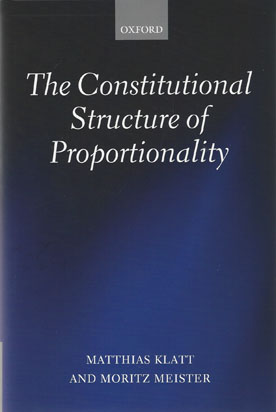
As constitutional law globalizes, the quest for a common grammar or 'generic constitutional law' becomes more pressing. Proportionality is one of the most prominent and controversial components of the modern, global constitutional discourse.
In view of the alarming tension between the triumphant success of proportionality and the severity of the criticism directed towards it, this book offers an in-depth analysis of the critics of proportionality and demonstrates that their objections against the proportionality test are not convincing. It clarifies and further develops the current theories of proportionality and balancing.
Building upon on Robert Alexy's predominant principles theory, the book suggests several modifications to this theory. Drawing examples from the case law of the European Court of Human Rights, the European Court of Justice, and various national constitutional courts it illustrates the argument in favour of proportionality and demonstrates its relevance for deciding concrete cases.